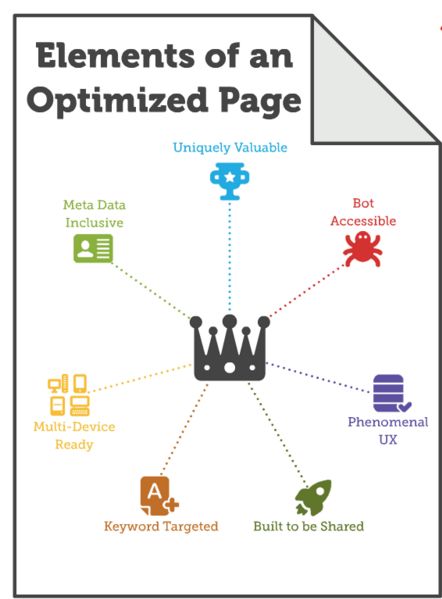Rumour has it that SEO is dead! As with most things these days, we can pretty much track the origins of this startling development back to Google! Since their Penguin algorithm in 2012 began to penalise manipulative link building practices the obituaries for SEO started to appear in the digital press. However, as the famous misquote from Mark Twain puts it “rumours of my death have been greatly exaggerated!” .
SEO is not dead! It is still alive and kicking and will ensure that the topics being written about on your pages will achieve deserved visibility in relevant search listings. However, the ghastly art of keyword stuffing has thankfully served its time! So how do you now use SEO effectively to increase your reach? Let’s look at seven key areas:
1. Keywords
As mentioned above, gone are the days of keyword stuffing, with unnatural sentences forming a rather disjointed content . but never mind, it’s full of keywords so does it matter if people hate reading it?! The emphasis is now on well-written copy, and Google is now much better at understanding natural language, so convoluted keyword stuffing no longer works. It is still important, however, to have keywords distributed throughout your content, and these should be based on search volume for that keyword, how relevant it is to your business, and also what your competitors are using.

2. Page Optimisation
Once you have decided on your keywords, you need to embed these in your site’s content so that each page focuses on a core term, and also several related terms. We like these two images from Rand Fishkin. Above is a guide to what a well-optimised page should include – not only keywords but other essential considerations as well. Below is an example of a well-optimised page for a fictitious organisation, Mary’s Bakery:

3. Links – for better or for worse?
Best practice for links is evolving. Instead of the old practice of adding links to websites, sometimes unnatural links, it is now far more important to earn links by offering quality products, service and content, and spreading the word about this in order to earn links. The level of “quality” can be evaluated by a number of means, predominantly the number and status of other websites that link to your page and your site as a whole.
Link earning is important not just in terms of the integrity of your business but also to boost search rankings. In February 2011 Google’s Panda update introduced a search filter that aimed to stop sites with poor quality content gaining undeservedly high search rankings by manipulative link-building practices. Its subsequent Penguin update ensured that sites that had demonstrably taken action to remove bad links were able to regain rankings, although other sites that had previously escaped being penalised may then have been caught.
4. Content
There is a common trend to forego investment in, and attention to, SEO altogether and replacing it completely with content marketing. However, this would be a big mistake. Both on-page SEO as described above, and more technical “background” SEO – such as search engine crawlers, server response codes and robot directives – are still needed to ensure that your website registers on Google’s radar. There are still commercial benefits from understanding and working with ranking algorithms that you can’t afford to ignore if you want your website to indexed and ranked effectively.
Therefore whilst it is essential to continually improve the quality and relevance of your content, it cannot be over-emphasised that this should be in conjunction with and NOT replace SEO.
5. Mobile
One of our most popular articles of 2015 was “What the F**k has Google done to my website”. It explained the changes brought by Google’s introduction last April of a significant new mobile-friendly ranking algorithm designed to boost the rankings of mobile-friendly pages in Google’s mobile search results. Nicknamed Mobilegeddon, the update ensured that for searches on mobile devices, websites that were geared towards mobile devices achieved higher search rankings. As mobile makes up about half of all Google searches this had a significant impact! Our recent article on How to Improve your Mobile Search Rankings LINK explores in more detail how to work within this still recent development to optimise your SEO mobile strategy.
6. Overall UX
These days there is increasing emphasis on User Experience – UX. Not only do you need to attract people to your website in the first place but you also need to ensure that they enjoy being there and want to come back! For further details see our recent article The UX Factor. Google has recently emphasised that those sites that offer positive UX will be rewarded accordingly in their search results. One of Google’s most recent updates – Phantom – seems to have built in UX as an influence on the positioning in search rankings. So good UX should be a goal and a passion for your business. Whatever the exact nature of Google’s algorithm, it can only have a positive impact on your reputation and your rankings.
7. Local results
Launched in 2014 in the US, then rolled out in UK, Australia and Canada and all English-speaking countries apart from India, Google’s Pigeon algorithm aimed to provide more useful, relevant and accurate local search results. It means that search results are based on the user’s location and listings available in the local directory. These changes also affected the search results shown in Google Maps.
Some local businesses have seen their rankings increase after Pigeon rolled out but others have seen their listings take a hit. To make sure you do not get dropped on from a great height, it helps to update your content regularly and make sure you include your company name, location and product or service as much as possible. Also ensure that you have a clear and easy to find contact page featuring your company name and address in the text. Also be aware of including any alternative names that your area may be known as, and where possible mention nearby areas too. Pigeon now recognises on a more intuitive basis the variety of potential names for any given location and can combine results into a single cohesive search result.
So, not only is SEO definitely still alive and kicking, but it is increasingly evolving in both complexity and relevance. Your digital marketing strategy therefore needs to embrace carefully chosen – and constantly changing – SEO in conjunction with the other areas we have covered above. We will report back in due course on the next Google algorithm update – whenever and whatever that may be – to help you keep SEO working for you and not the other way round!

